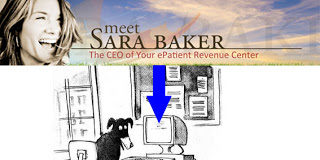 Some of you may remember back in November, 2005, when I posted snippets from an FDA public hearing on DTC (see “FDA DTC Hearings: Snippets from Day 1“). Well, yesterday’s U.S. House of Representatives Energy and Commerce hearing on DTC seems to be a replay of the FDA version.
Some of you may remember back in November, 2005, when I posted snippets from an FDA public hearing on DTC (see “FDA DTC Hearings: Snippets from Day 1“). Well, yesterday’s U.S. House of Representatives Energy and Commerce hearing on DTC seems to be a replay of the FDA version.
You might say that Congress is re-enacting this investigation into DTC precisely because two and one half years after FDA held it’s hearing, the agency and the drug industry have done precisely ZIP about the issues raised. In fact, since 2005, the industry and FDA have cozied up and are attempting to rubber-stamp FDA’s approval of DTC ads under a payola scheme (see “PDUFA Payola!“).
But enough about trivial matters. Let’s focus on the testimony, and especially the testimony of Ruth Day, head of Duke University’s Medical Cognition Laboratory.
I call Dr. Day the “Bee Lady” because she famously claimed at the 2005 FDA hearing that the bee in the Nasonex TV commercial beat its wings furiously when risk information was being presented but was still when benefit information was presented. Day claimed that the beating wings divert viewers’ attention from the risk information (see “DTC Pros and Cons Presented at FDA Hearing” for a more detailed analysis).
It appears that Day is sticking to her story: she retold her study results to the House Committee yesterday and claimed that the Nasonex bee flew around as side effects were listed, but simply hovered when benefits were discussed.
[NOTE: Day actually changed her study’s end point since her 2005 FDA testimony. At that time she talked about the bee’s beating wings, whereas yesterday she talked about bee flight. That’s because Schering changed the commercial after the FDA hearing so that the wings beat equally fast when presenting BOTH benefit and risk information. It appears that drug industry scientists are not the only researchers who can use the same data but move the goalposts to prove a point!]
“All of these wing flaps and wing flashes and sparkly things essentially divided the attention of the viewers … and thus led to decreased knowledge” of possible risks, Day said. [See “Drugmakers need to rein in ads, hearing told“.]
Undoubtedly, a lot of care and attention go into the visual of a drug ad, like the blueness and clarity of the Claritin sky. In fact, recent Claritin OTC TV commercials play that visual cue to the hilt by first showing a subdued color scene that is cleared to crystal blue after the actor takes Claritin. Clearly, if Claritin were still an Rx drug, the FDA may have said this goes too far in making a benefit statement.
But how devious and clever DTC advertisers must be to employ such nefarious devices as variations in bee flight to subvert the fair balance guidelines of the FDA! Not many experts actually give marketers that much credit for manipulating the elements of ads.
Could it be that the drug industry advertisers hire “cognitive science” experts like Dr. Day to design their ads? Could be. Perhaps one day, Day will also move on over to the “dark side.” Hey, it could happen!
P.S. Day never mentions why the bee speaks with a French accent. [Actually, since French fries became Freedom Fries, the bee is mute!]
 P.P.S. For those of you who claim the Nasonex bee is Spanish (see comments), here’s the Spanish version of my cartoon on the left.
P.P.S. For those of you who claim the Nasonex bee is Spanish (see comments), here’s the Spanish version of my cartoon on the left.









![6 Digital Tools at the Center of Healthcare Digitalization [INFOGRAPHIC]](http://ec2-54-175-84-28.compute-1.amazonaws.com/pharma-mkting.com/wp-content/uploads/2021/04/6DigitalTools_600px-100x70.jpg)




